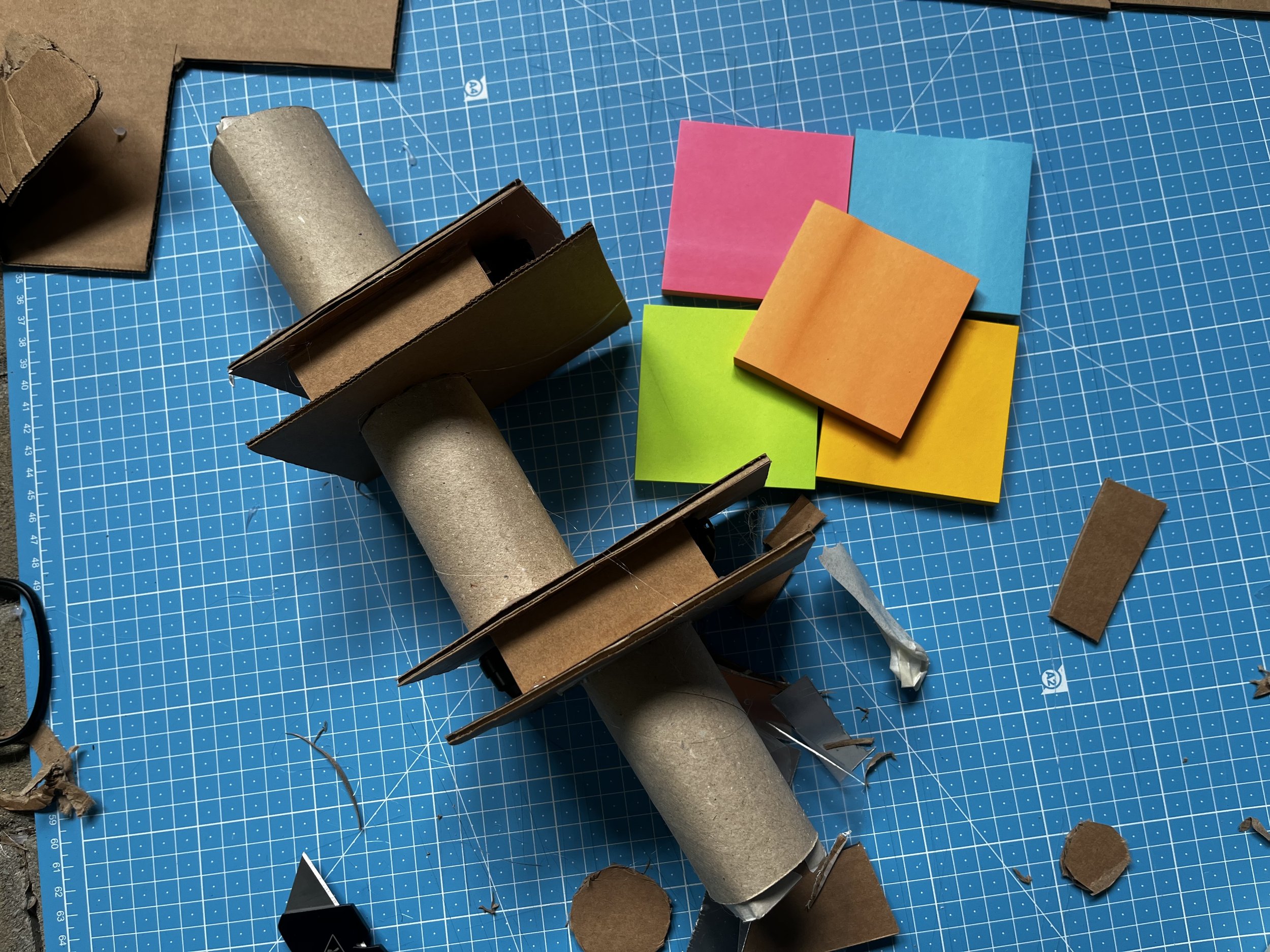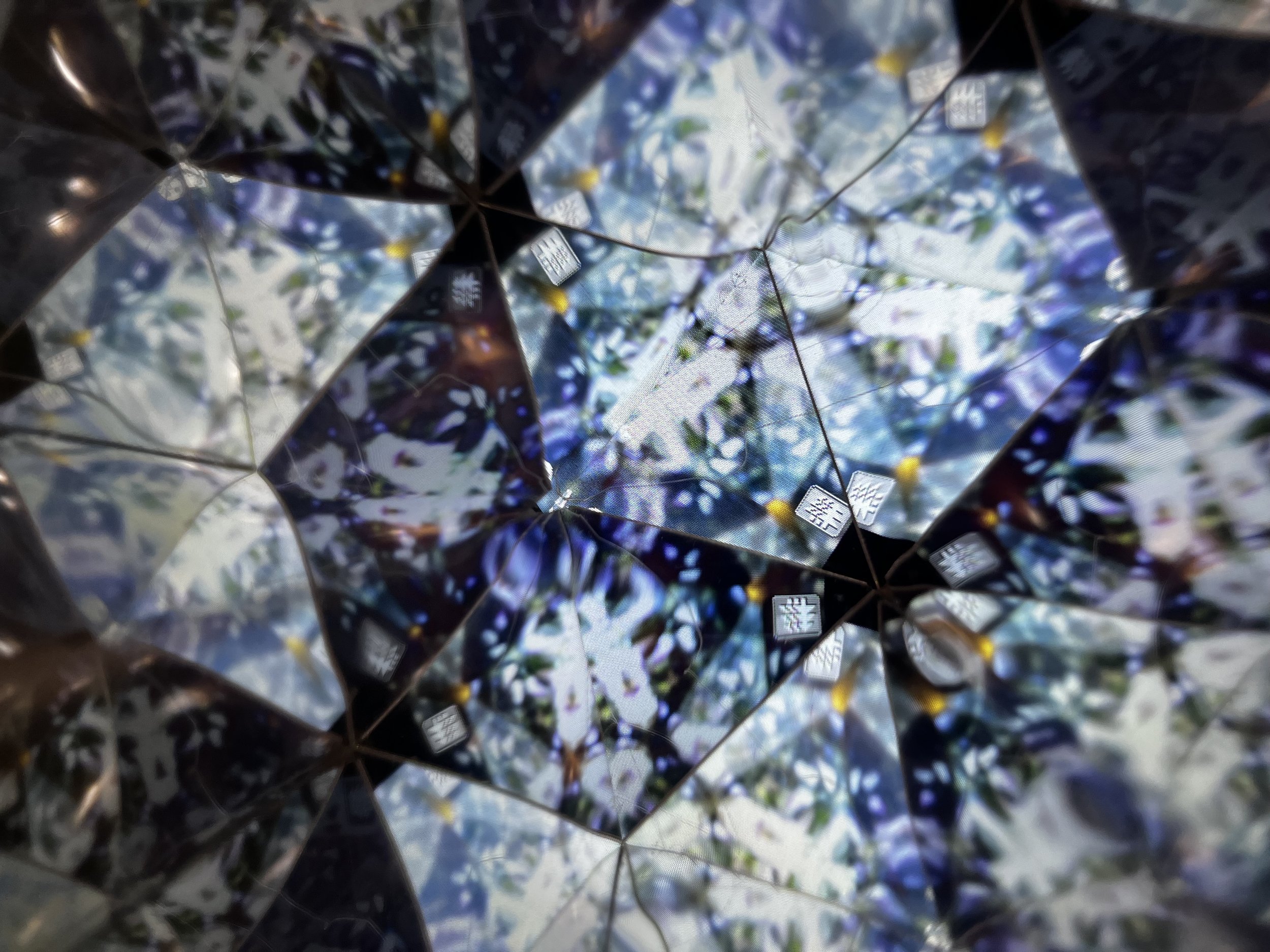Multilayered Kaleidoscope Experiments
Recently I led a professional development workshop for educators at the Deutsches Museum in Munich where participants explored different ways to make kaleidoscopes out of cardboard, mirrored cardstock and cell phone cameras.
During the workshop, Franziska and Irina, two of the tinkering educators at the museum, made a really cool prototype. They combined the usual cellphone kaleidoscope viewer so that the first phone camera with kaleidoscope was pointed at the screen of the second phone with a second kaleidoscope in front of the camera.
This innovative design created some amazing patterns as it digitally doubled the reflected images to create a fractal-like pattern. They made some add on cups with light play materials for the end of the scope to easily create different patterns. There was also a really nice design solution so that the phones could be slid in and out and arranged to precisely capture the psychedelic patterns.
I wanted to try this project in the PD workshop to give the participants a window into an authentic R&D process that our group of museum educators has been working on around kaleidoscopes for the LEGO playful museum learning network project. The multi-layered kaleidoscope idea was an amazing input for the prototyping process because it got me interested to try to make my own version after the workshop.
I decided to try to make a triple layered kaleidoscope when I got back in my home workshop. I started with three simple three-sided kaleidoscopes. Then used hot glue to build a structure with some cheap digital cameras sandwiched between the scopes. I created a tower with two cameras and three scopes stacked together (with an eyepiece for my cellphone at the other end).
The images that the tool produced were super complicated and detailed. It was a little bit grainy because the screens of the camera were not so sharp, but I could clearly see that the image was reflected multiple times to create a fractal like pattern. Even relatively simple objects created amazing images.
It was really fun to experiment with looking at all types of different materials that I could find around the shop and try to guess what they would look like through the scope. I would like to experiment with different arrangements and sizes of kaleidoscopes to swap into the structure. It would also be interesting to combine this idea with the loose parts kaleidoscope set that I have been working on to make it easier to attach and reattach parts. As well, it would be really interesting to try with all cellphone cameras so that the image quality doesn’t get lower with the multiple layers.
It’s really exciting that sharing in-progress kaleidoscope ideas during the PD workshop with educators resulted in uncovering a new direction for the experiments. I’m excited to keep exploring and sharing this and other related tinkering ideas.
The LEGO Playful Learning Museum Network initiative is made possible through generous support from the LEGO Group.






